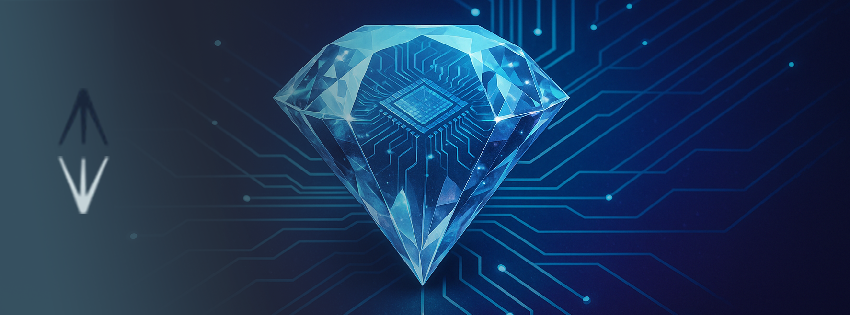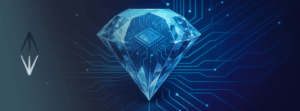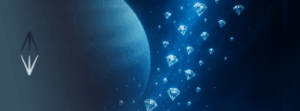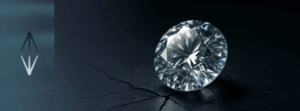The diamonds we wear in jewelry are famous for their beauty and hardness, but in laboratories around the world, “imperfect” diamonds are sought after. Small atomic defects—vacancies, impurities, and color centers—are turning this gem into the most promising platform for quantum computing and power electronics.
Below, we explore, step by step, why a diamond with “flaws” is worth more to science today than the most perfect of luxury gems.
1. From Ring to Chip: What is a “Quantum Defect”?
An ideal diamond is a pure carbon lattice. If an atom is missing or another element enters (nitrogen, silicon, tin…), a color center appears, capable of trapping electrons and behaving like a qubit:
-
NV (N-vacancy) — the most studied; it glows at 637 nm and is read with a green laser.
-
SiV, GeV, SnV — “group-IV” centers with indistinguishable photons, ideal for quantum networks.
-
H4, VH- — candidates for pressure/extreme temperature sensors.
Table 1 · Key Properties of Color Centers in 2025
| Defect | Spin | Emission Wavelength | T₂* at 300 K¹ | Distinctive Trait |
|---|---|---|---|---|
| NV⁻ | 1 | 637 nm (red) | 1–5 ms² | Operates at room temp; atomic magnetometry |
| SiV⁻ | ½ | 738 nm | 0.1–0.4 ms³ | Narrow line; indistinguishable photons |
| SnV⁻ | ½ | 620 nm | 0.1 ms (improved 2025)⁴ | Higher thermal stability |
| GeV⁻ | ½ | 602 nm | 0.02–0.05 ms | High emission efficiency |
¹T₂* is the “echo-free” coherence time; the best surface NVs exceed 1 ms in 2025 thanks to graphene surface passivation⁵.
²–⁵ See references turn1search3 and turn0search3.
2. Why Do Defects Turn Diamond into a “Super-Qubit”?
| Advantage of Diamond | vs. Superconductors / Trapped Ions | Source |
|---|---|---|
| Works at room temperature | Doesn’t need 10 mK cryostats | NV and SiV can be read with a laser at 300 K The Quantum InsiderThe Quantum Insider |
| 3D Scalability | The chip is solid; hundreds of qubits can be “written” in one mm³ | Bottom-up technique with STM proposed in 2025 The Quantum Insider |
| Photonic integration | Produces indistinguishable photons in-chip; ideal for quantum networks | Nature review 2025 Nature |
| Embedded sensors | The same center measures B field, T, or pressure during computation | DOE Roadmap 2024 quantum.gov |
| Extreme “classic” electronic material | Band-gap 5.5 eV, κ ≈ 2000 W/m·K; dissipates heat | UWBG review 2025 sciepublish.com |
3. Milestones 2024-2025: From Theory to Prototype
| Month / Year | Advance | Lab / Consortium | Impact |
|---|---|---|---|
| Nov 2024 | SPINUS demonstrates 10-qubit NV processor operating at 298 K | EU-Australia Consortium | First “mini-quantum” without liquid helium The Quantum Insider |
| Jun 2025 | In-situ control of SnV with atomic precision | Univ. of Oxford | Scalable quantum photonics University of Oxford |
| Jul 2025 | Atomic positioning with STM for NV | ANU + Quantum Brilliance | Path to 1,000-qubit chips in 5 years The Quantum Insider |
| Apr 2025 | Diamond membranes on Si and LiNbO₃ | Nature Comm. 2024 | Heterointegration with CMOS photonics Nature |
4. Diamond = Super-Semiconductor
Table 2 · Comparative Metrics for Power Electronics
| Material | Band-gap (eV) | Breakdown Field (MV/cm) | Thermal κ (W/m·K) | Switching Frequency | Note |
|---|---|---|---|---|---|
| Si | 1.1 | 0.3 | 150 | < 20 kHz | Mature industry |
| SiC | 3.3 | 3 | 490 | 50 kHz | Electric vehicle |
| GaN | 3.4 | 3.3 | 230 | 2 MHz | RF source |
| Diamond | 5.5 | > 10 | 2000 | 10 MHz (theoretical) | No heatsinks, but complex doping PMCPower Electronics News |
Diamond MOSFETs are still in the lab phase, but companies like Element Six or Allectra already sell synthetic diamond heat-spreaders for GaN chips.
5. From Sensor to Brain: Near-Term Applications
-
Quantum magnetoencephalography: NV helmets that read neural fields with sub-mm resolution Joint Research Centre
-
High-power optical relays: diamond as a wear-free switching substrate (κ 2000 W/m·K).
-
Portable quantum clocks: NV + SiV as hyper-stable references.
-
Post-quantum cryptography: SiV photonic nodes for short-range “quantum Internet.”
6. Challenges to Solve
-
Reproducible p/n doping – the 5.5 eV bandgap complicates carrier introduction.
-
Massive atomic positioning – the STM technique is slow; laser lithography and self-corrected ion implantation are being investigated.
-
Integrated photonics – coupling fiber ↔ diamond waveguides with < 1 dB loss.
-
Surface noise – paramagnetic spins reduce T₂; passivation with graphene raises it to 1 ms in 2025 Nature.
7. Frequently Asked Questions
| Question | Brief Answer |
|---|---|
| Does a quantum NV chip work without cryogenics? | Yes. NVs maintain coherence at 300 K; only temperature stabilization and magnetic field shielding are needed. |
| How many real qubits exist in diamond today? | Demonstrations of 10 qubits (SPINUS 2024); roadmaps to > 1000 qubits in 5-7 years. |
| Will it replace silicon in classic electronics? | In > 10 kV switches, it is the ideal candidate, but cost still relegates it to high-power niches. |
| Can a jewelry diamond be used as a qubit? | Only if it has the right defect, which requires CVD growth and controlled doping; not feasible in market gems. |
8. Roadmap 2025-2035 (Summary)
| Horizon | Quantum Goal | Electronics Goal |
|---|---|---|
| 2025-27 | NV chips > 50 qubits; first 10 km SiV photonic link | Diamond-Ga₂O₃ 6 kV diodes |
| 2028-30 | Universal NV logic at room temperature | 1 kV, 10 MHz diamond MOSFET |
| 2031-35 | Hybrid quantum network (SiV ↔ telecom) | Heatsink-free AC/DC conversion for HVDC grids |
Conclusion
The beauty of the diamond no longer lies only in its purity: it is its controlled imperfections that open the door to quantum computers that operate without liquid helium and to transistors capable of converting gigawatts with minimal dissipation.
In the next decade, the “precious stone” could become the cornerstone of future computing, merging the oldest luxury with the most advanced technology on the planet… and, perhaps, of the universe.
Featured Sources: Nature Rev. Materials 2025 (turn0search0) · SPINUS 2024 (turn0search1) · ANU/Q Brilliance 2025 (turn0search2) · Univ. of Oxford 2025 (turn0search3) · DOE Roadmap 2024 (turn0search4) · JRC EU 2025 (turn0search6) · McKinsey Quantum Monitor 2024 (turn0search7) · UWBG review 2025 (turn2search3) ഘ




